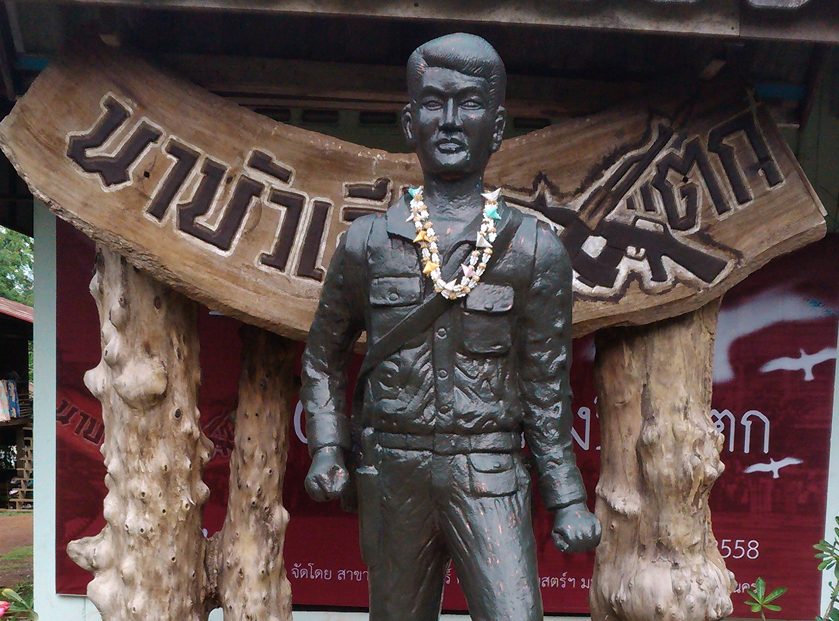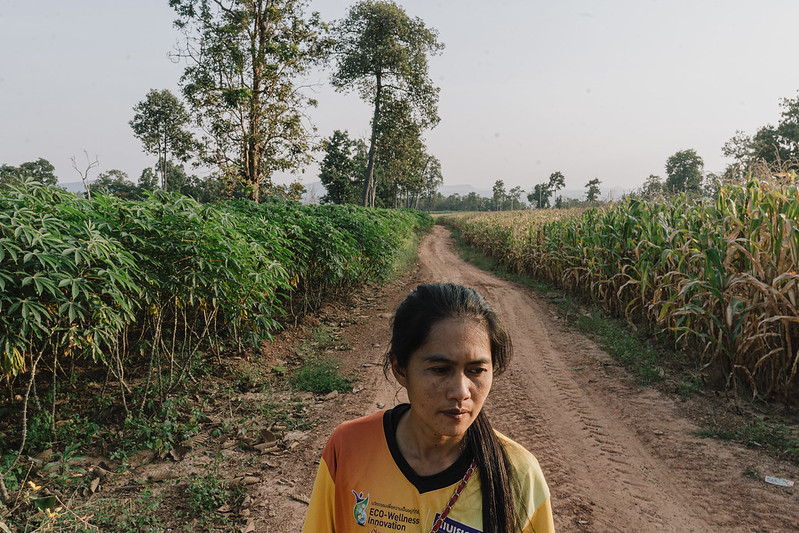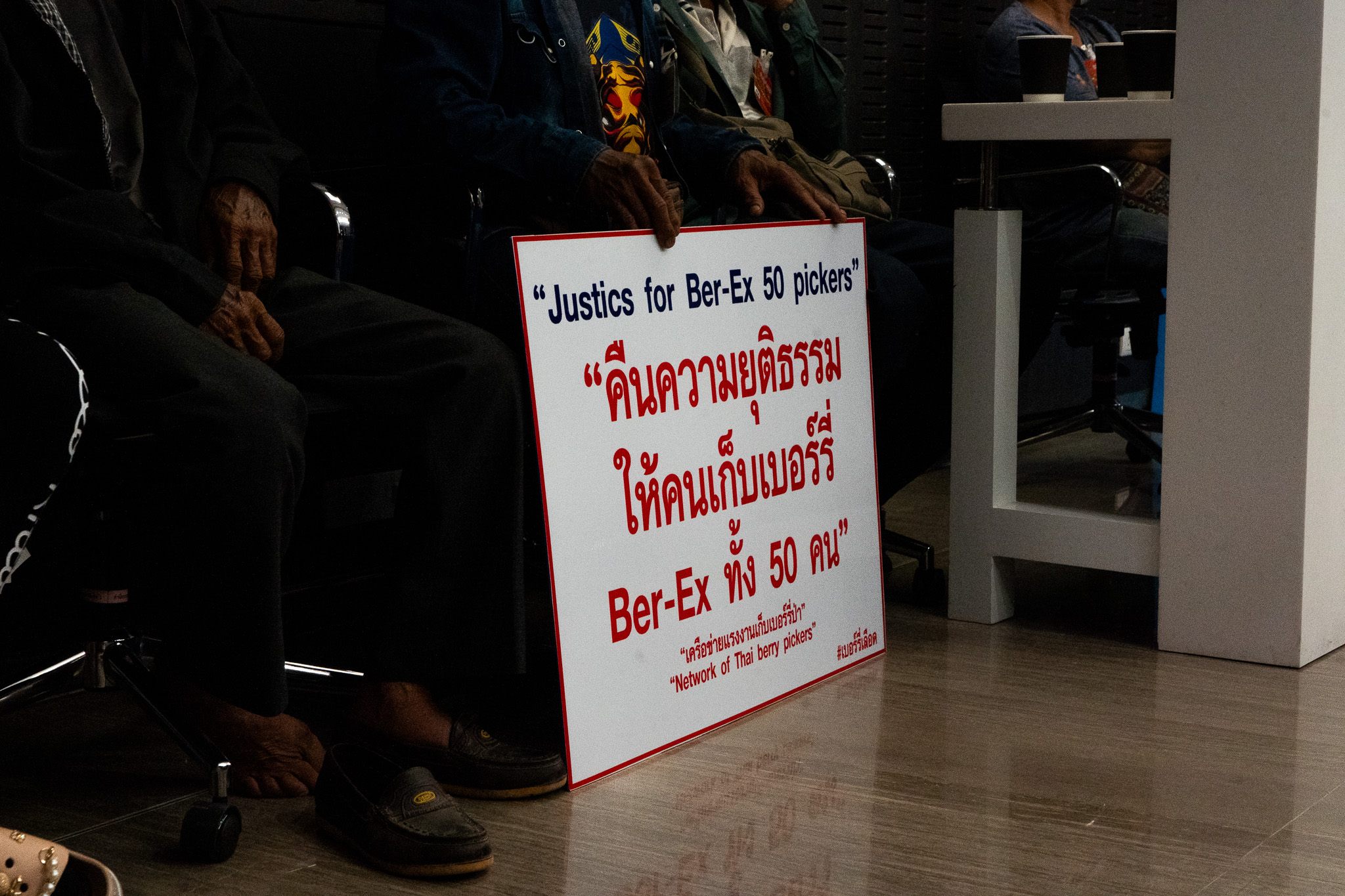On August 7, fifty million Thais are called to cast their votes in a referendum on a military-backed constitution, which many say will weaken the country’s democratic system and entrench the generals’ influence over politics. On the same day in 1965, a violent incident in the Northeast led thousands of farmers to take up arms against the military-ruled state that had promised a new constitution for years.
The Isaan Record uses this occasion to present a special three-part series of articles that tell the untold story of their rebellious past and their struggle for political change.
Comrade Phairat, a life insurance broker with a fondness for blue dress shirts and heavy golden watches, holds his hands up as if he was pointing a gun into the air. “Sometimes I duck down in panic because I see helicopters hovering over me,” he says. The 65-year-old suffers from flashbacks, 33 years after he ended his fight in an armed rebellion against the state.
Fifty years ago, a military clique ruled the country after it seized power in a coup in the late 1950s. General Sarit Thanarat tore up the latest charter, outlawed all political parties, and left the country waiting for a new constitution. By the time of his death in 1963, an appointed constitution drafting assembly had still not delivered.
The country kept waiting as the generals tightened their grip to power using Article 17 of the interim constitution to order arbitrary detentions and executions that were set out to stifle all dissent and opposition to military rule.
But after eight years, on August 7, 1965, a burst of resistance from the impoverished Northeast sent shockwaves throughout the country, fomenting a rebellion against the military regime in Bangkok that was to last for decades.
Based on interviews with dozens of former armed fighters over the period of one year, this is the story of how thousands of farmers in the Northeast came to leave their rice fields to join the armed struggle against a military state.
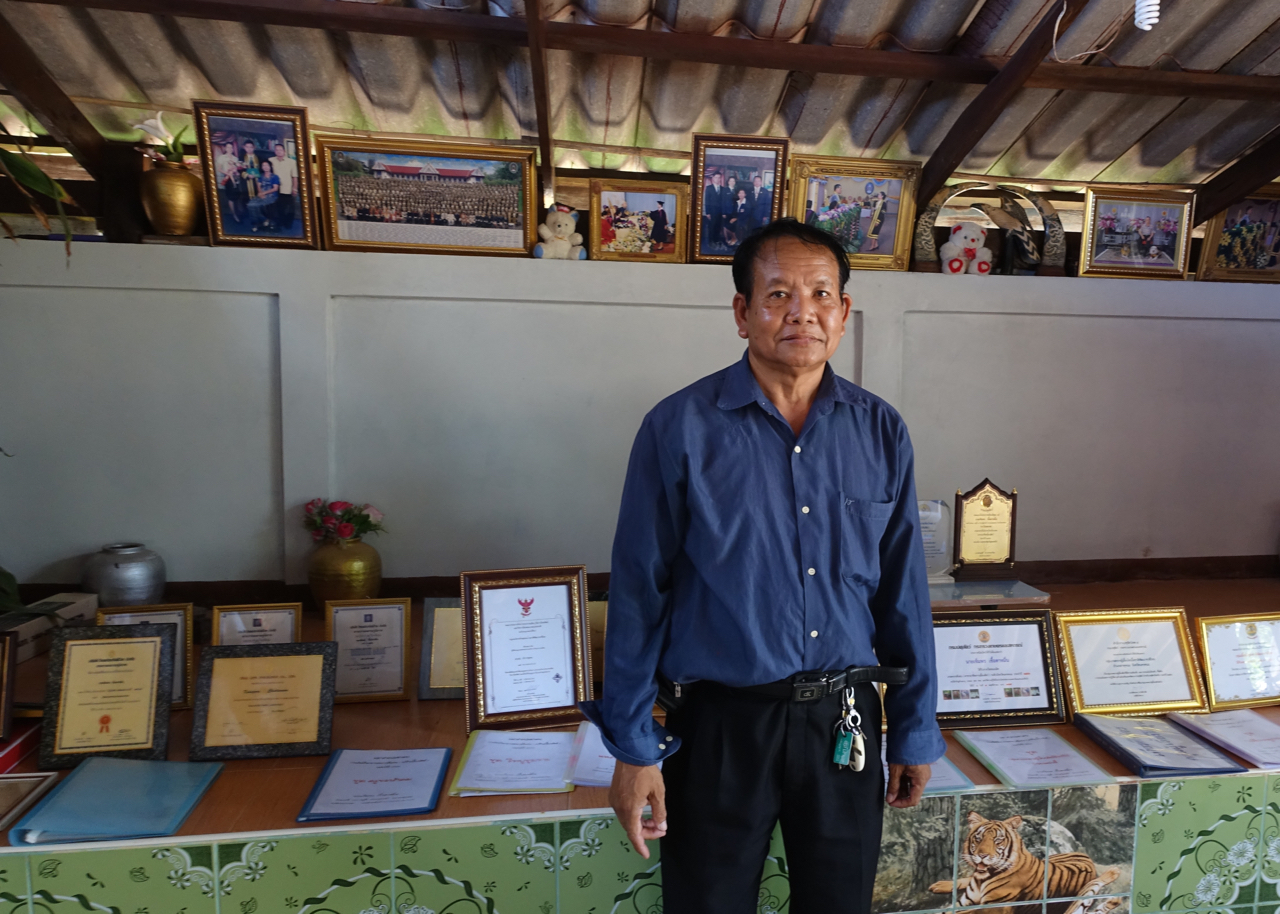
Khemporn Chuatamuen, alias Comrade Phairat, turned from fighing in an armed struggle against the state to making a living by selling life insurances.
A different angle
Comrade Phairat chuckles to himself as he recalls his cunning start in a 20-year engagement in the armed rebellion. “I was only a kid and the soldiers often sent me to buy them rice whisky and deliver love notes to the village girls,” he recalls. “But they had no clue that I was a spy for the rebels.”
“Who is a comrade here?” asks Phairat, whose real name is Khemporn Chuatamuen, sitting on a plastic chair in a circle of thirty villagers in his home in Nakhon Phanom Province. Everyone’s hands shot up and the villagers one by one gave their code names and positions.
Nestled between the Phu Phan Mountains and the Mekong River, Chat Pattana Chat Thai is one of three villages in the Northeast that was set up in the 1980s by the state to give new homes to communist fighters who surrendered. Most families in the village have a history of fighting along with the Communist Party of Thailand (CPT) in the 1960s and 70s.
Growing up in a poor rice-farming community, Phairat says he was bound to turn into a fighter. His father was politicized through CPT recruiters and left the family’s home in 1964 to join the rebels at their base in the Phu Phan Mountains in the upper Northeast.
It was the state’s exploitation of rural people in the Northeast that drew his father into the communist movement, he explains. “The CPT offered him a solution,” says Phairat, adding that his father quickly climbed up the party’s hierarchy to become the director of the hospital at the base.
At night, Phairat’s father sometimes sneaked back into the village to visit his family though this eventually became too dangerous after a unit of the Communist Suppression Operations Command (CSOC) stationed itself in the village in the mid-1960s. The father encouraged his son to become part of the CPT’s sophisticated network of spies that the movement was setting up all across the country.
“Preparing and delivering food to the CPT fighters, spying on the security forces, and keeping an eye on the anti-communist villagers,” is how Phairat summarized his duties when he started working for the communists in 1963. He was twelve years old. Once Phairat turned 17, he told the village headman that he would go to work in the South but he instead secretly followed his dad to the communist base.
“As soon as I arrived, my political education began,” recalls Phairat. “The theories of Marx, Lenin and Mao Zedong helped me to see Thailand from a different angle.”
In 1965, the CPT officially announced that it was leading an armed rebellion from the Northeast against the Bangkok-based military government.
“The CPT’s goal was to build a party, a military, and mobilize the people to change Thailand’s political system,” Phairat explains, “because the country’s problems were caused from within, by a feudalistic system.”
Fifty years ago, the Northeast depended almost entirely on subsistence agriculture and lagged far behind the development of the rest of the country, scoring highest in national poverty rates and lowest in education and health care accessibility. But poverty in the region was rarely linked to exploitative landlords or voracious loan sharks like the CPT believed.
Endemic poverty was rather a consequence of inhospitable conditions for farming like poor soils and unpredictable cycles of floods and droughts, according to Charles Keyes, professor emeritus at the University of Washington and a leading expert on Thailand’s northeast. The situation was made worse by the lack of economic opportunities outside the farming sector.
For many Northeasteners at that time, the state seemed like a distant ghost that only occasionally appeared in the form of an aloof government official from the provincial capital who hardly ever addressed villagers’ grievances.
“In the 1960s, the government was in no way accountable to the people and there were numerous incidents of the government refusing to accept petitions from villagers,” said Professor Keyes in an interview with The Isaan Record.
As the CPT’s battle cry for a people’s revolution echoed through the fields of the Northeast, many of the aggrieved farmers understood the promises of communism to be a solution to the problems left unaddressed by a military government that they viewed as apathetic to their concerns.
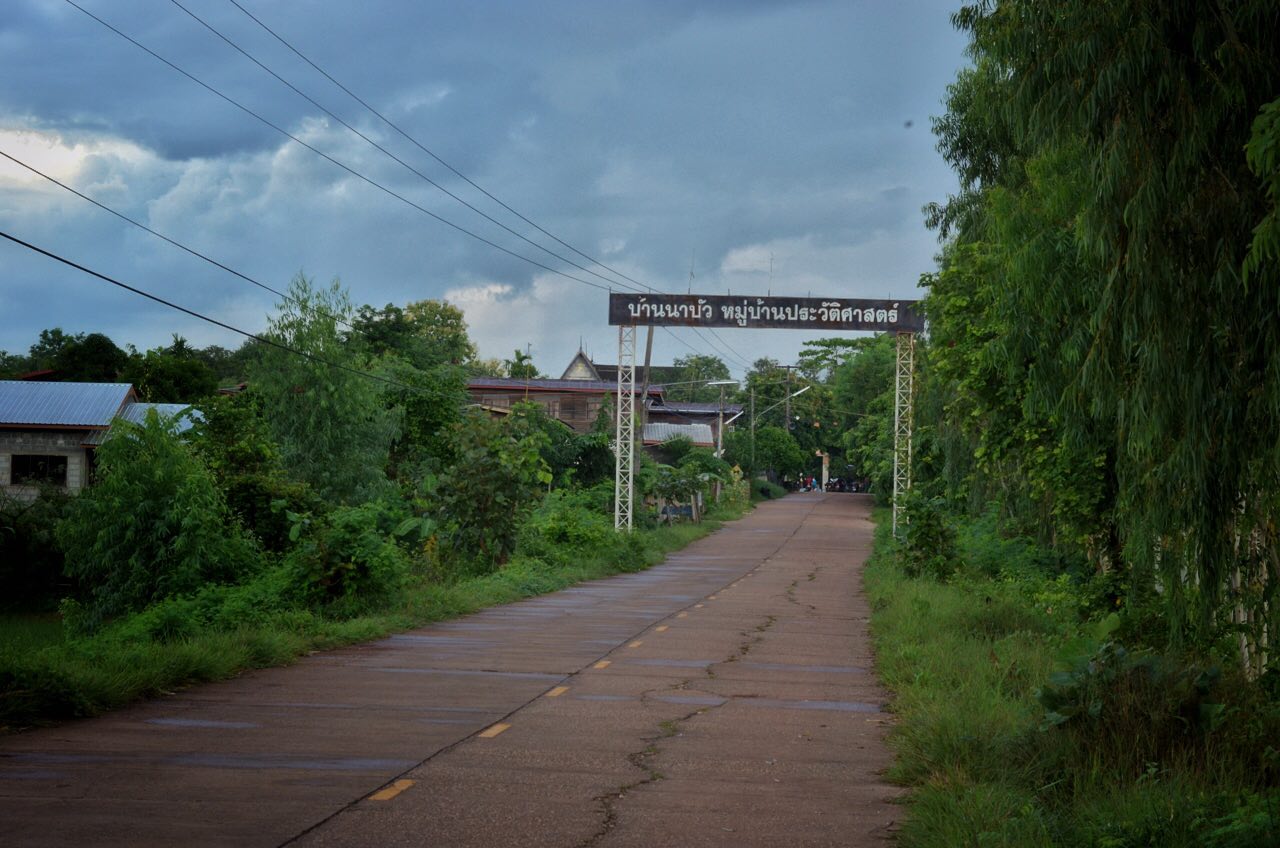
Nabua village in Nakhon Phanom province was the first community in the Northeast to collectively join the armed struggle of the communist movement in 1965.
Education across the border
Following the snaking Mekong River north for 40 kilometers, along the natural and once porous borderline to Laos, lies Nabua, “a historic village,” as the gate at the community’s entrance proclaims.
On August 7, 1965, this unassuming ethnic Phu Thai village made headlines all across the region as it served as the backdrop to the first clash between communist fighters and Thai security forces that kicked off the CPT’s insurgency against the state.
This border region was targeted in the 1950s by recruiters of the Lao communist movement, known as the pathet lao, which worked with Vietnamese communists to mobilize villagers in the Northeast to join the revolutionary movements across Indochina.
Comrade U-sa, a bright-eyed woman, was too young to join the first troop of villagers recruited to receive months-long trainings in Laos, Vietnam and even China. But when her brother returned to Nabua, she decided, at the age of 16, to accept the offer of “an education” in Vietnam.
“I had heard there was equality between women and men in Vietnam and women could become doctors,” recalls the 67-year-old, explaining her motivation to leave her home village as a teenager.
At that time, Nabua villagers had neither access to health care nor to higher education, and many felt like the central government in Bangkok had little interest in lifting the region out of poverty, Comrade U-sa says.
“Socialism in Vietnam let people study for free and even medical treatment cost nothing,” Comrade U-sa claims, adding that it took Thailand decades to introduce virtually free universal health care in 2002.
In the scorching heat of March 1966, plagued by “leeches that sucked all the blood out of our legs,” Comrade U-sa trekked along secret trails from Nabua village to a communist base in Bac Hà District in northern Vietnam, located close to the Chinese border.
She stayed for almost two years, learning Vietnamese and receiving medical training to become a nurse before she returned to Thailand in 1968.
“I knew exactly what I was doing all this for,” says Comrade U-sa. “I went to Vietnam to learn as much as I could in order to return home and help my people.”
Not a soldier for the state
Two hundred kilometers south of Nabua, Bunsong Madkhao sits on the dark tile floor of the meeting house of a farmers’ cooperative in Yasothon Province. The semicircle of mainly middle-aged females, who joined the meeting out of interest in organic farming, moan in unison as he recites the many strict regulations that organic farmers have to follow to keep their fields clean of the chemical fertilizers that their neighbors might use.
The 66-year-old is the chairman of a successful organic rice farming group that actively seeks to convince farmers to switch to organic rice seeds. But in a former life, 40 years ago, Bunsong worked alongside Comrade Phairat to politically educate and recruit new members for the communist movement.
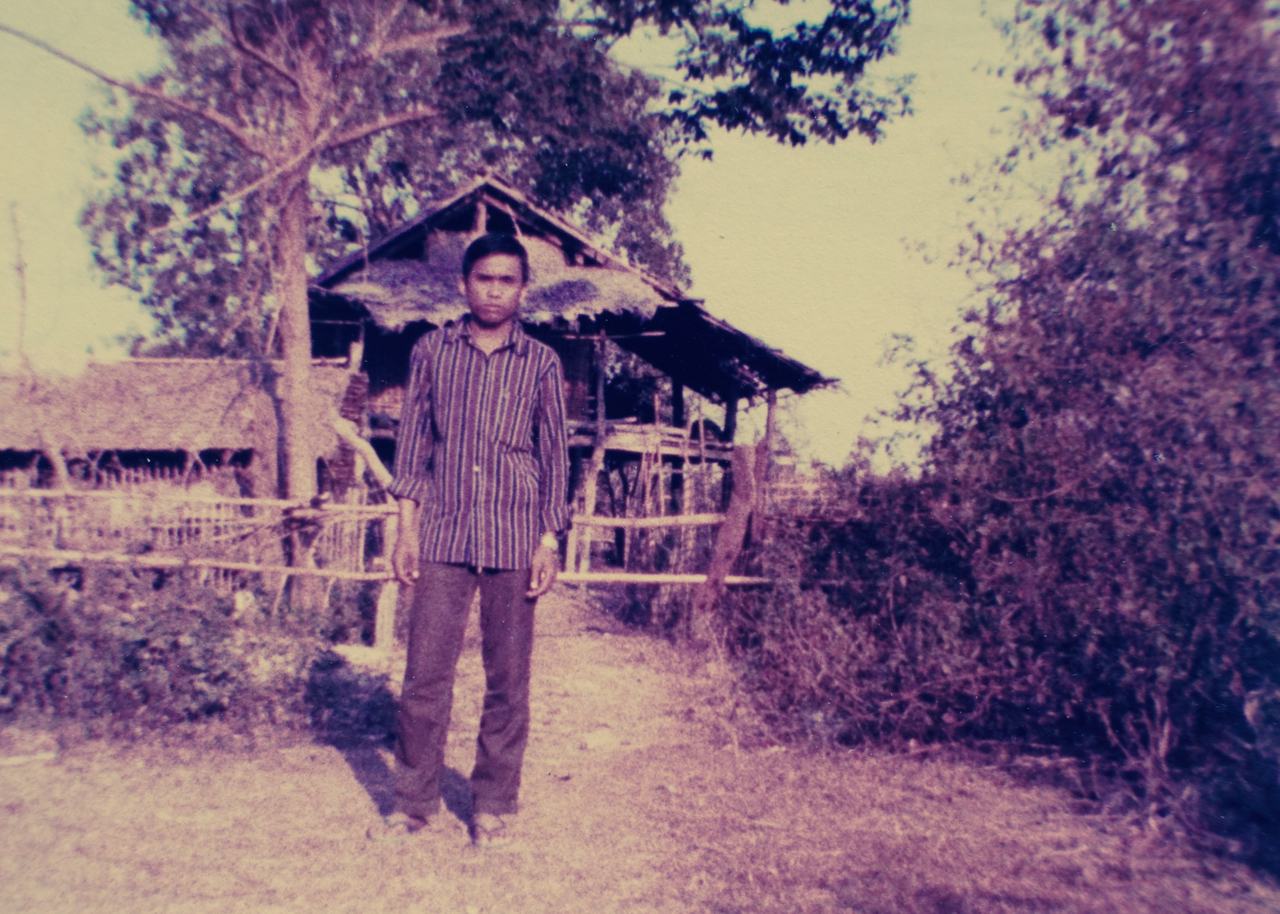
At the age of 21, Bunsong Madkhao made a decision that changed his life forever. Instead of following the conscription call of the military, he joined the communist insurgency to fight against the state.
In 1964, a then 14-year-old Bunsong sat in front of his croaky radio and listened spellbound to the news program of the Voice of the People of Thailand, the CPT’s radio station broadcasting from southern China, which he said sparked his interest in politics.
At the age of 21, Bunsong’s life was turned upside down. In the yearly military draft lottery that even today all Thai males legally must attend, he pulled a red ticket that sealed his fate. He had to make the “biggest decision” of his life, says Bunsong. “I decided to become a soldier,” he says before chortling, “a communist soldier!” It was a decision “against the capitalist side” and “for the people,” he explains, slipping into communist rhetoric.
A few days later, he silently left his home and was picked up by a CPT spy. Together, they trekked overnight to a CPT base hidden in the sprawling forests of Phu Sa Dok Bua in the provincial triangle of Amnat Charoen, Mukdahan, and Yasothon.
Arriving at the base felt like stumbling into a utopian land for Bunsong. “It was like a whole other world to me, a society of a different kind, hidden in the forest,” he says, “full of young people debating the future of their country. I didn’t feel homesick at all.”
Bunsong underwent a rigorous political education based on communist ideology and some combat training over a period of three months. He says the training instilled discipline in him and taught every entrant to “take responsibility for their actions.”
When Bunsong left the base to infiltrate villages and recruit new members, he struggled to fit back into the rural communities he had grown up in. “People were drinking their nights away, singing loud karaoke songs,” he recalls disdainfully and complains that such behavior was not beneficial to the communities.
Together with Comrade Phairat, he was part of a secret unit with orders to recruit villagers for the movement. The two of them travelled throughout the Northeast. Bunsong estimates that over time they recruited around a 1,000 families to the Communist cause.
By the late 1970s, the communist insurgents were active in all but two provinces in the Northeast and the movement’s ranks had swelled to more than 12,000 armed fighters all across the country. When the military dictatorship made a violent return and cracked down on the student protests in Bangkok in October 1976, up to 3,000 students left the city and fled into the forests.
The fragile revolutionary movement
For many observers this was a certain sign of a looming communist revolution in Thailand, perpetuating fears that had been aggravated in 1975 by the communist overthrow of the Lao monarchy and the Khmer Rouge’s rise to power in Cambodia.
The Thai communists’ numbers were boosted by the influx of radicalized students to their forest bases, but events inside and outside the country exposed the fragility of the movement.
Many of the students who had found refuge in the forest got caught up in ideological disputes with the communists. They admired the CPT for its devotion to radical social change, but according to Comrade U-sa, few shared the ideology of the armed struggle for revolution. “They complained our way was too violent,” she says, “but if political power comes from the barrel of a gun, you can only fight back with guns.”
In the late 1970s, the coalition of communist movements in Southeast Asia was crumbling. Since the Thai communists sided with Maoist China, the communist governments in Laos and Vietnam who sided with the Russian banned the CPT from using their bases or supply lines.
From then on things became very difficult for the rural communist in the Northeast, Bunsong says.
By 1979, China abandoned the CPT as it began to improve relations with the Thai government. In order to please the rulers in Bangkok, it stopped support of the CPT and closed the Voice of the Thai People, the CPT’s radio station based in China and the main channel of communication between CPT members in Thailand.
“The shutdown of the CPT radio station in Yunnan province [in southern China] and the ban from using Lao bases, which also cut their food supplies, caused the first serious problems for the party,” argues Ian Baird, Assistant Professor of Geography at the University of Wisconsin-Madison, who researches Thailand’s communist movement.
In the early 1980s, the revolutionary spirit among the rural communists was diminishing and living conditions in the bases worsened. Comrades U-sa, Phairat, and Bunsong turned their backs on the revolution. Left with no other choice, the farmers fighters returned defeated from the wilds of the Isaan forests, their futures thrown into disarray.
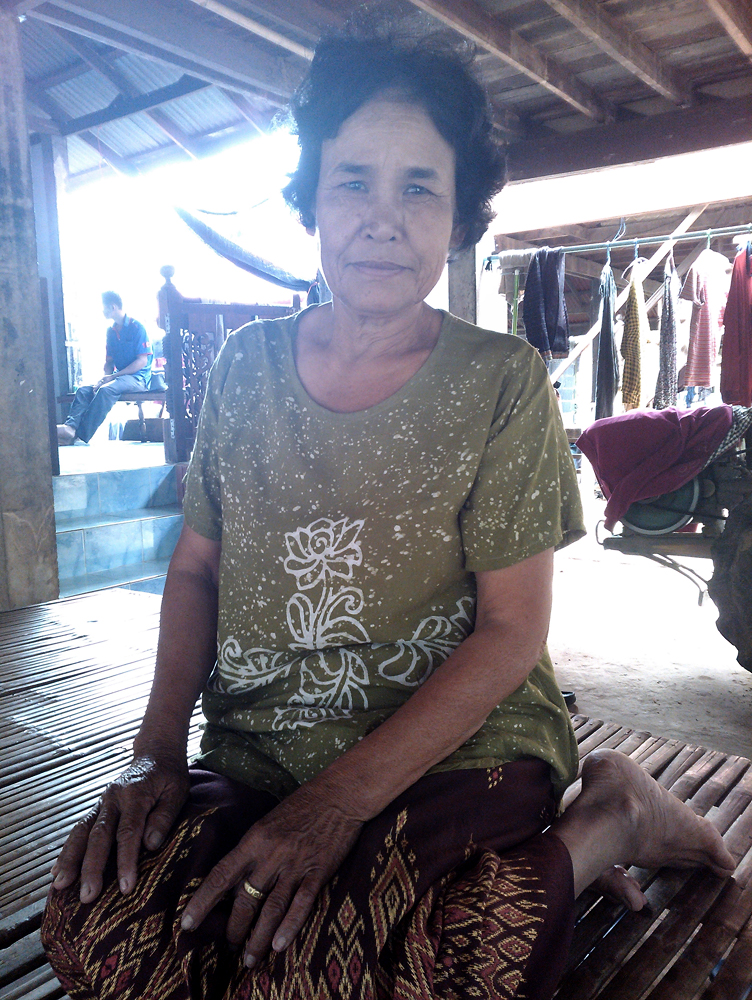
In March 1966, Comrade Us-a, at the age of 16, walked from her home in Nahkon Phanom province to northern Vietnam to reiceive a medical training to fight with the communist movement in Thailand.
It was a tragic moment for most Northeastern communists, some of who had spent almost two decades in the forests-turned-homes where they had married and raised children.
“We had sacrificed our lives, and many of us had been killed,” says Comrade U-sa. “But in the end we couldn’t make it. I was so sad I wanted to die.”
Bunsong likewise felt deeply disappointed, but he took one last shot to revive the struggle for revolution. He travelled to Laos asking for support to rebuild the Communist movement in Thailand. But the effort came to no avail, as the Lao People’s Party was too busy securing its power and recovering from years of war.
The CPT received its final blow when Thailand’s military government realized the inefficacy of its heavy-handed approach against the insurgency and announced a general amnesty in 1980. A wave of Communists announced their surrender. By the mid-1980s, the decades long Communist rebellion was virtually over.
Though the movement was hit hard when external support ended and the government’s anti-insurgency policy shifted, Thailand’s Communist revolution eventually failed for less obvious reasons, according to Professor Keyes.
“The CPT was initially successful, primarily among rural people in the upper Northeast, but subsequently it failed to sustain its recruitment, primarily because of the overly Maoist ideology,” he said.
As part of this ideology, the leaders of the CPT saw the villagers as passive victims of a feudalistic system whose Buddhist faith posed an obstacle to the revolution. But these Buddhist traditions were central to the everyday lives of Isaan peasants, something that the CPT never quite realized, according to Professor Keyes.
The Communists’ popularity among rural Northeasterners eventually slipped because two fundamentally different worldviews clashed—the CPT’s Maoist revolutionary mind-set and the Buddhist beliefs of rural Northeasterners.
Part II continues with The Isaan Record’s special series on the experiences of rural Northeasterners in the communist movement, “From Rebels to Thai National Development Partners
